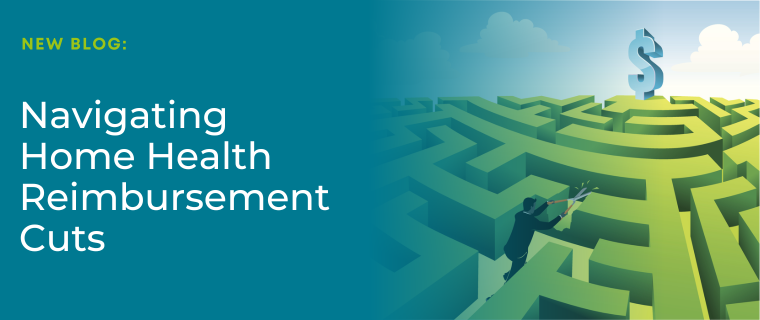Measuring The Effectiveness Of Hospice Care
Hospice is a sacred industry. We count success in more ways than the bottom line.
As a hospice nurseI measure successes by patients’ stories, their pain-free days and rest-filled nights. I see our industry’s importance in restored family relationships, fulfilled bucket list adventures and patient/family smiles during a difficult time.
As a hospice executive and a business woman, I have to add quantifiable measurementsto my list . After all, without the quantitative success, my patient can’t experience the aforementioned qualitative benefits.
There are several common quantitative metrics that all hospices track. There’s one metric though that many don’t track, and they should. We’ll talk about all of these, but we’ll start with the former–the common hospice care KPIs:
- Admissions. This measurement takes into account how an agency is doing when it comes to spreading the word about hospice care to the community and with healthcare partners. If admissions are up, patients in need are opting for the care your agency provides.
- Average Length of Stay (ALOS). ALOS is important because this piece of data relates to time. Time is one of the most important metrics in hospice care. Time means that the patient and family have opportunity to get to know their hospice team. Time means that the social worker can help them define what is most important and then to spend that time doing. Time means that the chaplain can guide the patient through making important amends, in order to find peace near the end of this life. Time means that the physician and nurse can truly assess pain and find the best solutions to meet the needs of the patients. Time means that an organization can truly have effect on a situation.
As a quick aside, allow me to explain how admissions and ALOS work together: Let’s say ABC Hospice has 10 admissions on day one of the month and doesn’t have any other admissions the rest of the month (believe me, every hospice feels like there are months just like this). Then let’s say the ALOS of those patients is 2 days. That means the hospice staff had a crazy week. They worked so hard for the first week of the month and probably felt very ineffective at their jobs. Two days of care just aren’t enough to accomplish the end-of-life care quality goals of hospice.
However, if each of those 10 patients have an ALOS of 60 days then time was on their side and care can be directive, well planned and beneficial to all concerned. Hospice’s use these two metrics regularly when assessing their effectiveness. We, as hospice professionals and caregivers, are comfortable talking about this metrics and together they can tell a story, over time.
However time is not always on our side because determining an accurate ALOS requires an endpoint (a discharge or death) from hospice. It takes over a year of data to accurately see the trends that ALOS can offer a hospice.
So when looking at metrics that would offer a clean view for hospices, Medalogix turned to another metric, billable hospice days.
- Billable hospice days. I wonder why we don’t look at his metric as often. I wonder if it’s because we’re comforting caregivers who are uncomfortable addressing the dollars associated with quality end-of-life care. Maybe it’s because we know that success is measured in softer and sometimes more meaningful ways. I don’t know the answer, but I do know that billable hospice days is a meaningful way to measure success. For a few reasons:
- It considers and combines the two traditional methods mentioned above (admissions and ALOS). If you’re billing more hospice days, you could have more admissions and longer lengths of stays or both.
- It’s helpful when trying to assess the ROI of healthcare technology likeMedalogix Bridge. For example, Medalogix breaks down billable hospice days to view patients who transferred from an organization’s owned home health agency to their own hospice. This way the organization can specifically look at Medalogix Bridge’s effectiveness and education surrounding its use. By using billable hospice days as a success metric, agencies can view the exact amount of transfers (or hospice admissions) from home health and see the affect those transfers had on their bottom line.
- It’s more timely. Since you don’t have to wait a full year to understand an ALOS trend, you can understand your successes sooner. In terms of Medalogix clients, agencies can begin to see their hospice billable days by internal transfers begin to grow as early as one month after implementing Bridge.
Hospice billable days should become a metric hospice providersare looking at on a regular basis–not just those using our hospice analytics technology, Bridge. Talking about dollars doesn’t diminish what we do as hospice caregivers. Rather, it enables us to continue to dowhat we do best–making memories and telling stories of an end of life lived well.
Related Blogs

Successfully Navigating the “Grey Area” between Home Health and Hospice: Considerations and Strategies for Home Health Operators
Amanda Fabozzi, PT, DPT Whether a patient should be served by hom...

Navigating CY 2025 Home Health Reimbursement Cuts: Medalogix Offers Innovative Solutions to Enhance Efficiency and Outcomes
As the Home Health industry grapples with the CY 2025 proposed rule, we ...

Solving the Home Health Maze: Referral & Intake
The CMS Office of Burden Reduction & Health Informatics (OBRHI) coll...


